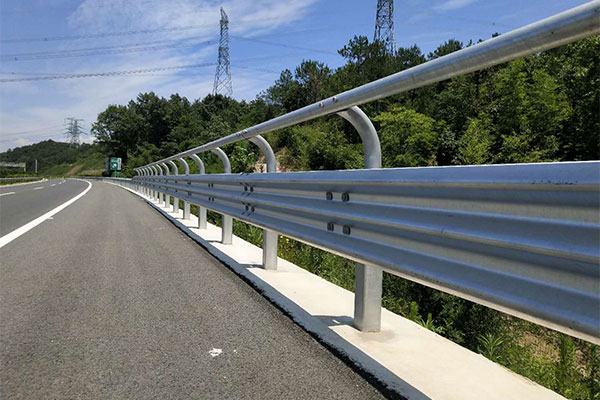When Are Guardrails Required on Roads? A Comprehensive Guide
Guardrails play a crucial role in ensuring road safety by preventing vehicles from leaving the roadway or colliding with hazardous obstacles. These protective barriers are strategically placed in areas where there is an increased risk of accidents, such as sharp curves, steep slopes, bridges, and medians. Understanding when guardrails are required on roads can help transportation authorities, engineers, and motorists make informed decisions to enhance overall safety. In this article, RoadSky will delve into the factors that determine the need for guardrails and the guidelines that govern their installation.

1. Traffic Volume and Speed:
One of the primary considerations for installing guardrails is the volume and speed of traffic. Areas with high traffic flow, especially on highways and major roads, are more likely to require guardrails. Similarly, if vehicles are traveling at high speeds, the likelihood and severity of accidents increase. Guardrails help mitigate the risks by redirecting or containing vehicles within their designated lanes, reducing the potential for severe crashes and injuries.
2. Road Design and Geometry:
The geometric features of a road, including curves, slopes, and bridges, significantly influence the need for guardrails. Sharp curves that pose a risk of vehicles losing control are prime locations for guardrail installation. Additionally, steep slopes or embankments where vehicles could potentially roll over often warrant the presence of guardrails. Similarly, bridges and elevated roadways often require guardrails to prevent vehicles from falling off the structure and causing catastrophic accidents.
3. Roadside Hazards:
Another critical factor in determining the need for guardrails is the presence of roadside hazards. These hazards include utility poles, trees, cliffs, ravines, deep ditches, and other fixed objects that pose a direct threat to motorists’ safety. Guardrails serves as a protective barrier between the roadway and these hazards, minimizing the risk of collisions and reducing the severity of accidents if they occur.
4. Pedestrian Safety:
In areas where roads intersect with pedestrian pathways, the safety of pedestrians becomes a significant concern. Guardrails are often necessary to separate pedestrian paths from vehicular traffic, providing a physical barrier and increasing the safety of pedestrians. This is particularly important near schools, parks, and other locations with high pedestrian activity.
5. Regulatory Guidelines:
The decision to install guardrails is not solely based on subjective judgment but also on established guidelines and regulations. Government bodies, such as transportation departments and road safety organizations, often develop guidelines that outline specific criteria for guardrail placement. These guidelines take into account factors like traffic volume, speed, road design, and roadside hazards. Consulting these guidelines helps ensure consistency and standardization in guardrail installation decisions.
Conclusion:
Guardrails are indispensable safety features that protect motorists and pedestrians by preventing accidents and mitigating their severity. Factors such as traffic volume, speed, road design, roadside hazards, and pedestrian safety are crucial considerations when determining the need for guardrails. It is essential for transportation authorities, engineers, and policymakers to adhere to regulatory guidelines in order to make informed decisions about the installation of guardrails. By prioritizing road safety and implementing guardrails where required, we can create safer roadways and reduce the risk of accidents, injuries, and fatalities.

